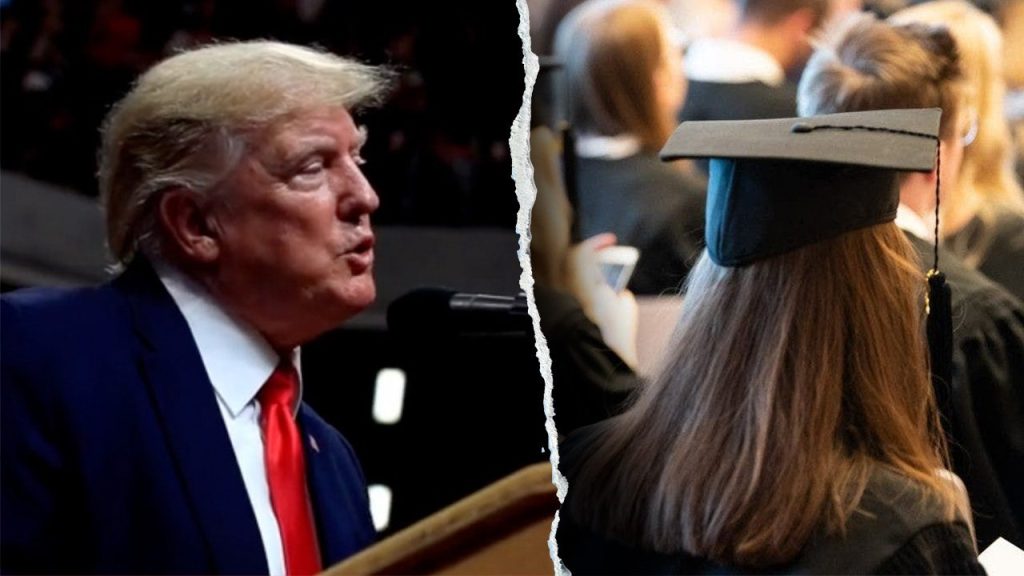In a decisive shift, the Trump administration has placed higher education at the forefront of its campaign against what it deems “woke” policies. Over the first 100 days of presidency, actions taken aim to dismantle Diversity, Equity, and Inclusion (DEI) initiatives within federal institutions and universities. With federal funding at stake, universities are feeling unprecedented pressure to modify or relinquish DEI programs to avoid severe consequences.
| Article Subheadings |
|---|
| 1) Overview of the Trump Administration’s Higher Education Policies |
| 2) The Strategic Use of Federal Funding |
| 3) University Responses to Policy Changes |
| 4) The Broader Implications for Academic Freedom |
| 5) Conclusion and Future Perspectives |
Overview of the Trump Administration’s Higher Education Policies
The Trump administration has shifted the focus of higher education policy, prioritizing a crackdown on Diversity, Equity, and Inclusion (DEI) programs since taking office. This strategy aims to redefine the landscape of academia, challenging what the administration labels as an “industrial complex” supporting DEI. In the first week of the presidency, President Donald Trump moved to dismantle these initiatives, taking swift action by closing down DEI offices at federal levels and issuing several executive orders that rescinded his predecessor’s policies neutralizing such programs. This ongoing campaign seems to resonate with a particular voter base seeking to re-establish traditional values within American society.
The Strategic Use of Federal Funding
Aside from the ideological motivations, the administration employs federal funding as a critical tool for exerting pressure on educational institutions. Universities such as Harvard University have seen billions of dollars in federal grants jeopardized, compelling them to reevaluate their DEI initiatives. Implementing these funding strategies is not merely a reaction to alleged inefficiencies but a calculated approach to impose significant changes across academic institutions nationwide. This tactic of leveraging financial resources has been articulated by numerous critics and proponents within the educational community, showcasing the power struggle over the direction of federal education policy.
University Responses to Policy Changes
As the ramifications of these policies unfold, many universities are adopting a strategy of rebranding DEI programs. Institutions like Northeastern University and North Carolina State University have attempted to circumvent the administration’s directives by renaming their DEI offices to terms such as “Belonging” or “Inclusive Excellence.” Despite cosmetic changes, advocates argue that the core issues surrounding diversity and inclusion continue to persist. Many critics, including Emily Sturge, a campus activist and reporter, note that these superficial alterations are insufficient to address the underlying challenges posed by the administration.
The Broader Implications for Academic Freedom
The shift in policy raises significant concerns regarding academic freedom and the independence of educational institutions. Critics argue that the administration’s actions threaten to undermine the very principles that foster innovation and creativity in higher education. William Jacobson, a professor at Cornell University, elaborates on the hostile environment that has developed, contending that academia faces ideological pressure that stifles diversity of thought. The implications reach beyond DEI; they pose fundamental questions about what constitutes a truly inclusive academic environment and the role of external powers in dictating educational norms.
Conclusion and Future Perspectives
As the initial phases of the Trump administration’s policies continue to unfold, the prospect of reforming the higher education landscape remains a complex and ongoing journey. Although significant changes have occurred, observers maintain that true transformation will require consistent effort and engage a wider discourse on educational values. There remains an undeniable tension between institutional independence and government influence over educational practices, prompting institutions and policymakers to navigate these challenges in a rapidly evolving socio-political landscape. As reforms solidify or falter, the narrative surrounding higher education in America is poised for considerable change.
| No. | Key Points |
|---|---|
| 1 | The Trump administration seeks to dismantle DEI initiatives in higher education. |
| 2 | Federal funding is increasingly used as leverage against universities. |
| 3 | Many universities are rebranding DEI offices to avoid administrative repercussions. |
| 4 | Concerns surround the impact on academic freedom and ideologically diverse campuses. |
| 5 | The path to reforming higher education is expected to be a long-term challenge. |
Summary
The Trump administration’s aggressive approach to higher education, particularly towards DEI initiatives, epitomizes a broader cultural and political battle in the U.S. The actions taken highlight a pivotal moment in navigating educational values, funding, and institutional autonomy. With universities facing pressure to adapt or lose funding, the implications for academic freedom and institutional integrity are significant, paving the way for enduring debates around education policy in America.
Frequently Asked Questions
Question: What actions has the Trump administration taken regarding DEI initiatives?
The Trump administration has moved to dismantle DEI initiatives, closing related offices and issuing executive orders to reverse previous policies on diversity and equity.
Question: How are universities responding to the new policies?
Many universities are attempting to circumvent the administration’s directives by rebranding DEI offices under different names while maintaining existing initiatives, leading to concerns about genuine reform.
Question: What are the implications for academic freedom within universities?
The ongoing policies raise significant concerns about academic freedom, as critics argue that government influence may dictate educational norms and stifle ideological diversity within academia.


